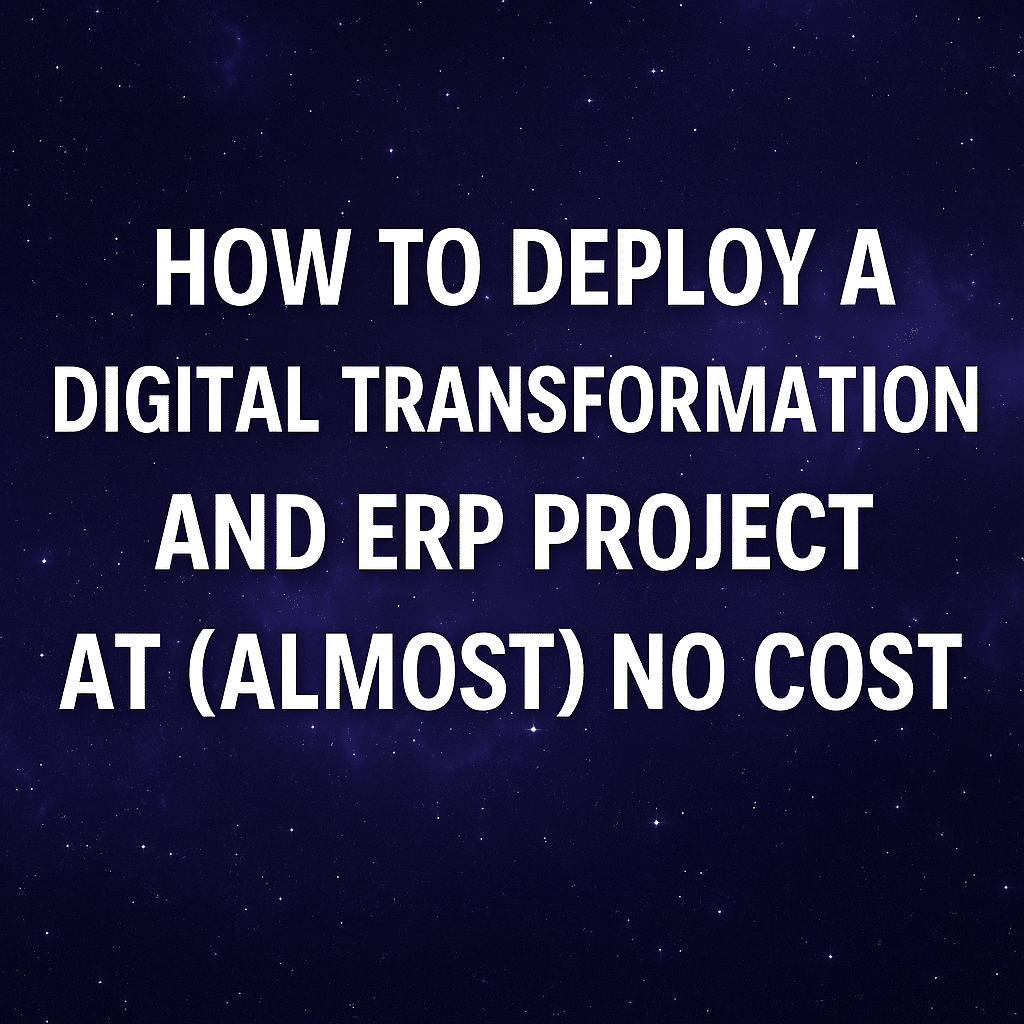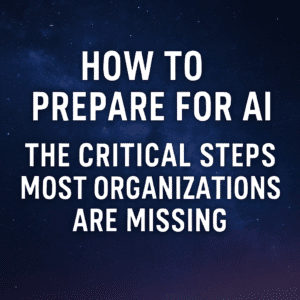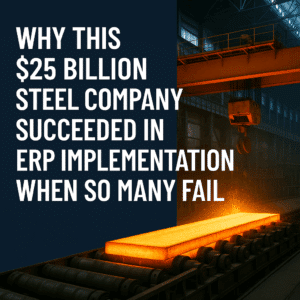Digital transformation and ERP projects are notorious for costing too much — but they don’t have to.
If you’re looking to modernize your business without breaking the bank, it’s time to rethink the traditional approach.
At Third Stage Consulting, we help clients worldwide achieve successful digital transformations without overspending. In this blog, we’ll share practical strategies for how your organization can deploy technology and transform operations — often at little to no incremental cost.
Table of Contents
ToggleWhy Traditional Digital Transformation Projects Fail Financially
For decades, organizations have invested heavily in enterprise technology, often overshooting their budgets. Cloud software, AI integrations, and modern ERP solutions promise to streamline operations, but they come with hefty price tags.
What’s worse, many businesses end up paying ongoing subscription fees for software they barely use — commonly known as “shelfware.”
Common causes of cost overruns in ERP projects include:
- Overspending on unnecessary features
- Underutilization of existing technology
- Lack of clear strategy and change management
- Over-reliance on software vendors’ upgrade mandates
The good news? You don’t need to follow the same expensive path.
How to Save Money (or Even Spend Nothing) on Your Digital Transformation
Here’s how to rethink your digital transformation strategy to dramatically lower costs — and in some cases, avoid major expenses altogether:
1. Reevaluate Your Existing Technology
Before investing in new ERP systems or digital platforms, conduct a full audit of your current technology landscape.
You might be surprised to discover:
- Unused modules in your existing ERP system
- Underutilized tools like Microsoft 365’s Copilot AI features
- Manual processes that could be automated with software you already own
Many organizations already have the tools needed to boost efficiency — they just haven’t fully implemented or optimized them.
👉 Pro Tip: Focus on maximizing ROI from what you already pay for before signing a new contract.
2. Prioritize People, Processes, and Strategy Over Technology
While shiny new ERP software might seem like the solution, it’s your people, processes, and business strategy that determine digital transformation success.
Invest more time and resources in:
- Business process improvements
- Organizational change management
- Employee training and adoption strategies
Technology is only an enabler, not the ultimate driver of transformation.
Redirecting budget from tech purchases to organizational improvements typically delivers higher ROI at a much lower cost.
3. Start Small (You Can Always Spend More Later)
Software vendors often encourage you to buy “the complete suite” upfront, promising transformative results.
But the reality is, many organizations are not ready to consume that much change at once — especially if they’re moving from legacy or manual systems.
Instead, start slow:
- Implement only the most critical tools first
- Focus on incremental process improvements
- Scale your digital transformation as you prove success
It’s much easier — and safer — to invest more once you’re seeing value, rather than digging out of a sunk-cost disaster.
4. Focus on Low-Cost, High-Value Improvements First
You don’t need the latest AI tool or the biggest ERP platform to start seeing real change.
Some of the highest-impact improvements come from:
- Fixing broken workflows
- Standardizing business processes
- Eliminating manual spreadsheet work
- Training staff on better system utilization
Operational inefficiencies, not technology gaps, are often the root cause of lost productivity.
Fix those first — it costs far less and delivers real, measurable results.
5. Avoid Getting Locked Into Unnecessary Long-Term Costs
Committing to a cloud ERP solution or expensive subscription model can lock your organization into years of payments — whether you’re getting value or not.
Instead:
- Lease modules and licenses only as needed
- Negotiate flexible contracts
- Phase in new technology incrementally
You can always expand your investment later when you’re confident it’s delivering value.
Conclusion: Smart Digital Transformations Don’t Have to Be Expensive
Digital transformation and ERP projects don’t have to drain your resources.
By focusing on people, processes, and your existing technology assets first — and avoiding unnecessary tech bloat — you can drive real business value without massive costs.
If you’re looking for more insights on how to successfully navigate digital transformation in 2025 and beyond, be sure to download our 2025 Digital Transformation Report.
It’s packed with best practices, independent software rankings, and lessons learned from hundreds of real-world transformations.
FAQ
Q: How can we reduce costs in an ERP project?
A: Focus on maximizing your current technology, invest in business process improvements, and avoid overcommitting to expensive software up front.
Q: Is it possible to do a digital transformation with no new technology investment?
A: Yes. Many organizations can achieve major operational improvements by optimizing existing tools, fixing processes, and improving user adoption — all without buying new systems.
Q: Why do digital transformation projects go over budget?
A: Common reasons include overinvesting in technology, poor project planning, inadequate change management, and lack of clear business strategy alignment.
Q: Should we invest in AI and cloud solutions right away?
A: Only if you’re ready. Start with low-cost improvements and scale your technology investment once you’re seeing value and operational maturity.






